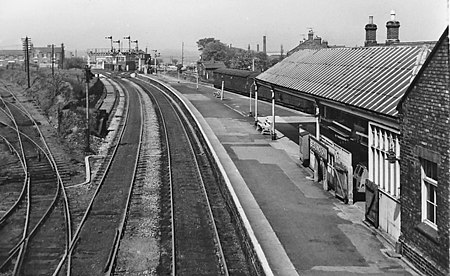Bedlington railway station
1850 establishments in England1964 disestablishments in EnglandBedlingtonBeeching closures in EnglandDisused railway stations in Northumberland ... and 6 more
Former North Eastern Railway (UK) stationsPages with no open date in Infobox stationProposed railway stations in EnglandRailway stations in Great Britain closed in 1964Railway stations in Great Britain opened in 1850Use British English from March 2017

Bedlington railway station was a railway station that served the town of Bedlington, Northumberland, England from 1850 to 1964 on the Blyth and Tyne Railway. The station was closed by British Railways in 1964, but it has been the subject of a reopening campaign since at least the 1990s.
Excerpt from the Wikipedia article Bedlington railway station (License: CC BY-SA 3.0, Authors, Images).Bedlington railway station
St. John's Road,
Geographical coordinates (GPS) Address Phone number Website Nearby Places Show on map
Geographical coordinates (GPS)
| Latitude | Longitude |
|---|---|
| N 55.1404 ° | E -1.567 ° |
Address
The Gables Health Centre
St. John's Road 26
NE22 7DU , East Bedlington
England, United Kingdom
Open on Google Maps






